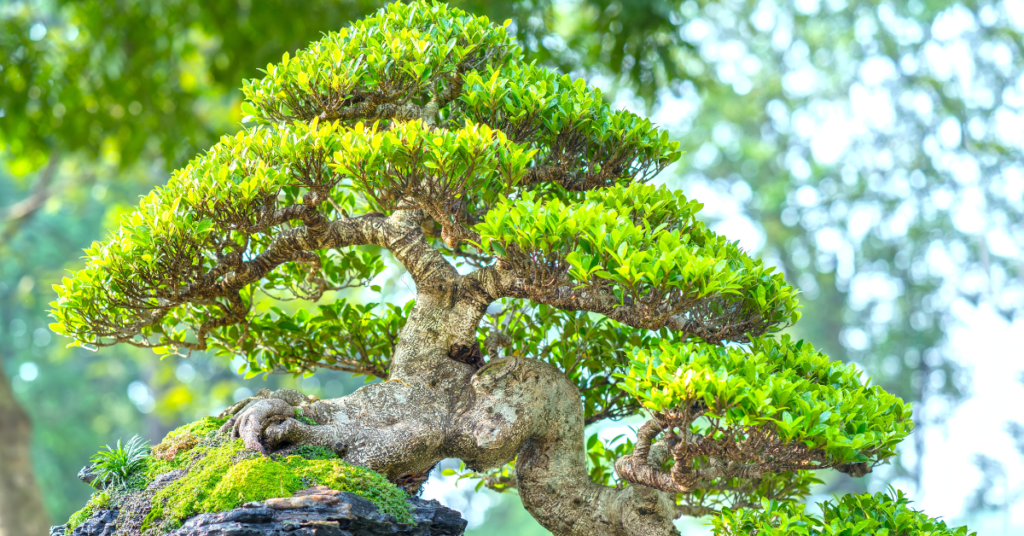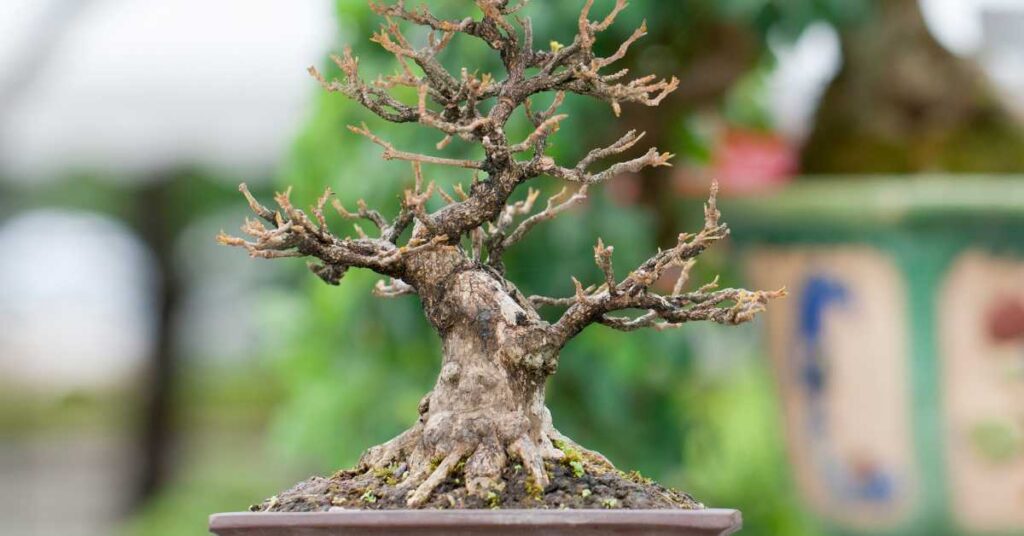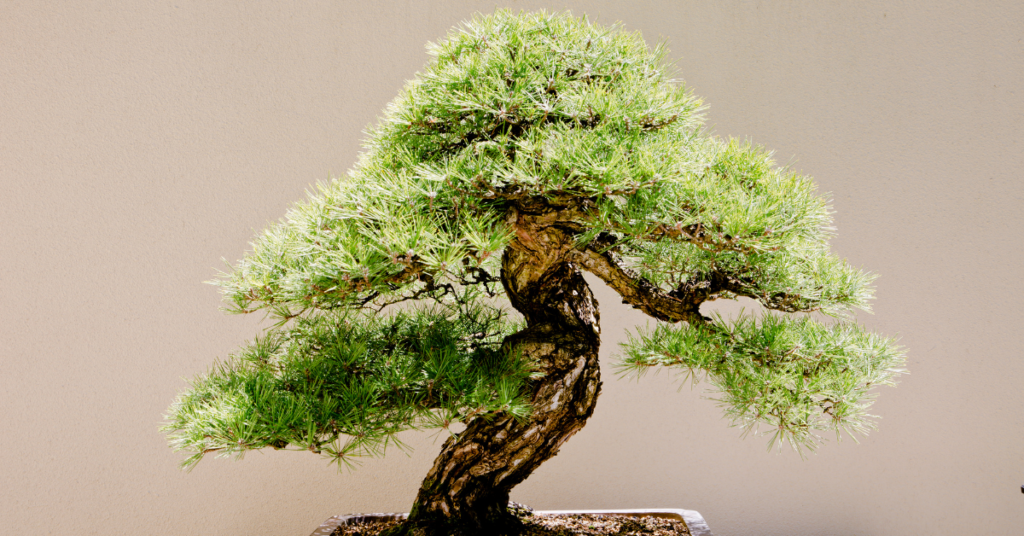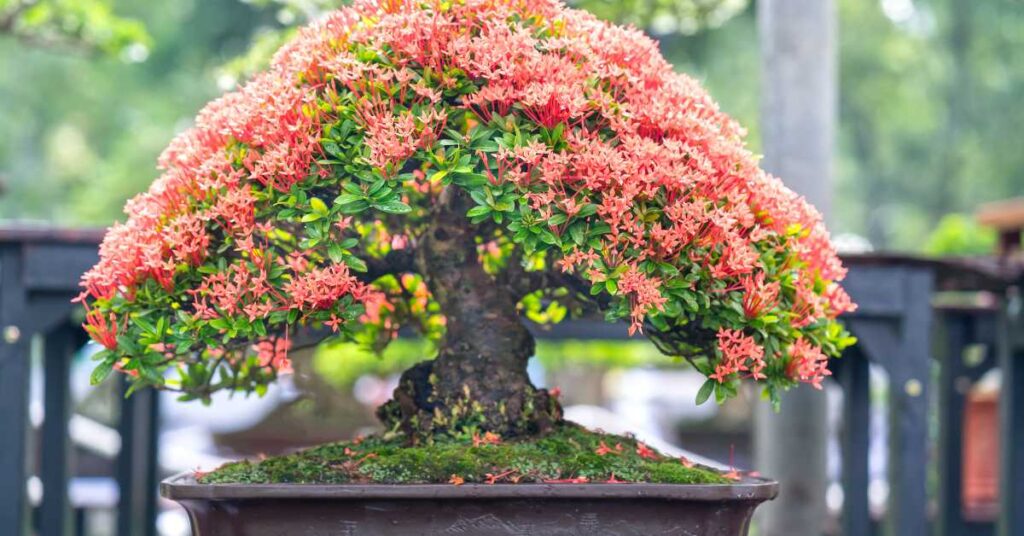How often should I water my bonsai tree in the winter? During winter, you should water your bonsai tree less frequently than in warmer months, typically once every 7-10 days. However, the exact watering schedule may vary depending on factors such as tree species, indoor/outdoor placement, and climate. To determine when your bonsai needs water, regularly check the soil’s moisture by inserting a finger about an inch deep; water thoroughly when the top layer feels slightly dry to ensure proper hydration without overwatering.
If you’re a bonsai enthusiast, you already know that taking care of these miniature trees requires a lot of attention and patience. One of the most common questions asked by beginners is how often to water their bonsai trees in winter.
It’s essential to understand that the watering needs of your bonsai tree vary depending on several factors, such as the species, size, location, and climate. During winter, when the temperature drops and daylight hours reduce, bonsai trees tend to enter a dormant phase.
This means that they require less water than usual as their growth rate slows down. However, it’s crucial to ensure that your tree doesn’t dry out completely as this can lead to irreversible damage.
In this article, we’ll delve into how often you should water your bonsai tree in winter and provide some tips on how to keep it healthy during the cold season.

Understanding Your Bonsai Tree’s Watering Needs
Winter is a wonderful season for bonsai enthusiasts to care for their beloved trees. However, it is important to understand that watering techniques must be adjusted according to the weather.
During winter, the weather becomes colder and drier, which can cause your bonsai tree to dry out quickly. Thus, it is crucial to pay attention to its watering needs.
Winter care for bonsai trees entails providing adequate water without overwatering them. Overwatering can cause root rot, which can ultimately lead to the death of your beloved tree.
Bonsai trees should be watered when the soil feels slightly dry or when you notice that the leaves are starting to wilt. However, be careful not to let your tree’s soil completely dry out as this can also harm your tree’s health.
By following these watering techniques in winter, you can ensure that your bonsai tree remains healthy and vibrant throughout the season.
How Often Should I Water My Bonsai Tree in The Winter?
You should water your bonsai less in the winter because the tree’s growth rate slows down during this period due to decreased sunlight, lower temperatures, and reduced metabolic activity. Consequently, the tree requires less water to sustain itself.
Factors Affecting Watering Frequency In Winter
Understanding your bonsai tree’s watering needs is crucial in keeping it healthy and thriving. However, the frequency of watering should be adjusted depending on the season. Winter care for a bonsai tree requires a different approach to watering compared to other seasons.
In terms of the watering schedule, it is recommended to reduce the frequency during winter as the low temperatures slow down the tree’s growth rate. It is best to check the soil moisture level regularly with a moisture meter or by gently sticking your finger into the soil up to an inch deep.
Water only when necessary, ensuring that excess water drains out of the pot completely. Overwatering can lead to root rot, which can be fatal for your bonsai tree.
The Importance Of Soil Moisture
As the winter season sets in, it is paramount to monitor soil moisture for your bonsai tree. Soil moisture is essential in promoting root growth and facilitating nutrient absorption. Overwatering or underwatering your bonsai tree can lead to its withering or even death.
To measure soil moisture, insert a finger into the soil at about one inch deep. If you feel dampness, then your bonsai tree has enough water. On the other hand, if you feel dryness, it’s time to water your plant.
When watering, ensure that you use techniques such as drip irrigation or bottom watering to avoid disturbing the roots of your bonsai tree.
By monitoring soil moisture and applying appropriate watering techniques, you will help keep your bonsai tree healthy throughout the winter season without any negative effects on its growth and appearance.
Signs Your Bonsai Tree Needs Water
If you’re wondering how often to water your bonsai tree in the winter, it’s important to pay attention to early warning signs that your tree needs water. Common mistakes include watering too frequently or not enough, which can lead to root rot or dehydration respectively.
To avoid these issues, start by checking the soil moisture level regularly. If the top layer of soil is dry to the touch, it’s time to water your bonsai tree. Additionally, look for signs such as wilting leaves or a change in leaf color. These are early warning signs that your bonsai tree is thirsty and requires hydration.
- Overwatering can lead to root rot and ultimately kill your bonsai tree.
- Dehydration can cause leaves to wilt and turn brown.
- Regularly checking the soil moisture level and observing any changes in leaf appearance can help prevent both overwatering and dehydration.

Tips For Avoiding Overwatering
Watering techniques are crucial to the health of your bonsai tree.
During the winter months, it is important to be cautious about watering your bonsai tree as overwatering can be detrimental.
One way to avoid overwatering is to check the soil drainage. If the soil does not drain well, this can lead to water accumulating in the roots and causing root rot. In this case, you may need to repot your bonsai tree with better-draining soil.
Another way to avoid overwatering is by checking the moisture level of the soil. Stick your finger into the soil up to your first knuckle; if it feels dry, then it’s time to water your bonsai tree. However, if it still feels moist, then you should wait a few more days before watering again.
Remember that different species of bonsai trees have different watering needs, so be sure to research specific care instructions for your type of tree.
With proper watering techniques and attention to soil drainage, you can help ensure that your bonsai tree thrives during the winter months.
Tips For Avoiding Underwatering
Your bonsai tree is like a delicate flower that needs constant care and attention. It’s easy to forget about it during the winter, but neglecting it can lead to dehydration and ultimately death.
To prevent this, make sure your watering schedule is optimized for the colder months. Preventing dehydration starts with understanding how often to water your tree. During the winter, you should water your bonsai tree less frequently than in the summer.
This is because the tree doesn’t need as much water due to its slower growth rate. You should also avoid watering your tree if the soil still feels moist from the previous watering.
By following these tips and keeping a close eye on your bonsai tree’s hydration levels, you can ensure its survival through the winter months without risking underwatering or overwatering.
How To Water Your Bonsai Tree In Winter
Watering your bonsai tree in the winter requires a bit of extra attention due to the colder temperatures and reduced light levels.
One of the most important watering techniques to keep in mind is to not let the soil dry out completely. However, it’s also important not to overwater your bonsai as this can lead to root rot.
To determine when to water your bonsai, use a moisture meter or simply stick your finger about an inch into the soil. If it feels dry, it’s time to water.
When watering, use room temperature water and ensure that all parts of the soil are evenly moistened. Avoid getting water on the leaves as this can cause damage in colder temperatures.
In terms of winter care, it’s also important to monitor humidity levels around your bonsai tree. The dry air from indoor heating systems can cause stress on your plant, so consider using a humidifier or placing a tray of water near it to increase moisture levels.
With proper watering techniques and attentive winter care, you can help ensure that your bonsai tree thrives throughout the season.
Using Humidity Trays To Increase Moisture
Humidity trays are a great way to increase moisture around your bonsai tree, especially during the dry winter months. These trays work by holding water underneath a grate or grid that supports the plant. As the water evaporates, it creates a humid microclimate around the bonsai.
Humidity tray placement is important for maximum effectiveness. You should place the tray directly beneath or next to your bonsai tree, making sure that it does not sit in standing water. This will allow for optimal evaporation and prevent any damage to the roots of your tree.
Keep in mind that not all types of bonsai trees are suitable for humidity trays, so be sure to research whether or not your specific species can benefit from this method.
Types of bonsai trees suitable for humidity trays:
- Tropical and subtropical species such as Ficus and Chinese Elm.
- Conifers like Junipers prefer higher humidity levels.
- Deciduous varieties like Japanese Maple benefit from increased moisture in the air.
- Flowering species like Azalea require consistent humidity levels for healthy growth.
Using humidity trays is an easy and effective way to maintain proper moisture levels for your bonsai tree during the winter months. By placing the tray correctly and choosing a suitable species, you can provide your plant with a healthy environment that promotes growth and longevity.
Remember to monitor the water level in your tray regularly and adjust as needed to ensure maximum benefits for your beloved bonsai.
Adjusting Watering Frequency Based On Location And Climate
When it comes to watering your bonsai tree, it’s important to consider the specific location and climate you’re in. Regional differences can have a significant impact on how often you should water your tree. For example, if you live in a dry area with low humidity levels, your bonsai may need to be watered more frequently than if you live in a more humid environment.
Another factor to consider is winter precipitation levels. During the winter months, many areas experience lower levels of rainfall and snowfall. If this is the case where you are located, you may need to reduce the frequency of watering your bonsai tree. It’s important not to over-water your tree during these drier months as this can lead to root rot and other health issues.
| Location | Climate | Watering Frequency |
|---|---|---|
| Dry | Arid | More frequent |
| Humid | Tropical | Less frequent |
| Moderate | Temperate | Average |
| Cold | Arctic | Less frequent |
In general, adjusting your watering frequency based on location and climate is key to ensuring that your bonsai tree remains healthy and thriving throughout the year. By taking into account regional differences and winter precipitation levels, you can make informed decisions about when and how often to water your tree. Remember that every bonsai is unique and may require different care depending on its specific needs.
Monitoring Your Bonsai Tree’s Health In Winter
As winter settles in and the cold winds blow, your bonsai tree may need a little extra care to stay healthy. Just like you bundle up in warm clothes, your bonsai needs some protection too.
Keep an eye on its watering schedule and make sure it’s getting enough moisture without drowning it.
Winter care for bonsai trees can be a bit tricky, but with proper attention, they can thrive through the season.
Remember to monitor your tree’s health closely and adjust its watering schedule as needed.
With patience and care, your bonsai will flourish even in the coldest of winters.
Frequently Asked Questions
What Is The Best Type Of Water To Use For Watering My Bonsai Tree In The Winter?
When it comes to watering your bonsai tree during the winter months, it’s important to consider the type of water you’re using.
The pH levels and mineral content of the water can greatly impact the health of your tree.
To ensure optimal growth and development, it’s recommended to use water with a pH level between 6.0-7.5 and low mineral content.
This will prevent any potential damage or stress on the tree’s delicate roots, allowing it to thrive even in colder temperatures.
Can I Water My Bonsai Tree Less Frequently If It Is In A Cooler Room During The Winter?
Watering frequency for your bonsai tree during the winter largely depends on the room temperature.
If your tree is in a cooler room, you may be able to water it less frequently than if it were in a warmer room.
However, it’s important to still monitor the soil moisture levels and only water when necessary.
Overwatering can be just as harmful as underwatering, so finding the right balance is key.
When in doubt, stick to a consistent watering schedule and adjust as needed based on the temperature and humidity of the room.
How Can I Tell If My Bonsai Tree Needs Water If The Soil Is Still Moist?
Feeling the pulse of your bonsai is like sensing a lover’s heartbeat; it takes intuition and patience.
Monitoring moisture levels in the soil is crucial, but what if it appears damp to the touch?
Don’t be fooled by appearances; check deeper into the pot to see if the roots are thirsty.
Watering techniques can vary depending on your tree’s species and environment.
One effective method is submerging your pot in water for a few minutes, then allowing it to drain before returning it to its spot.
Remember, not all trees are created equal, so listen carefully to what yours is telling you.
Is It Okay To Use A Spray Bottle To Water My Bonsai Tree In The Winter?
When it comes to winter watering tips for your bonsai tree, using a spray bottle may not be the best option. While it can provide a quick and easy way to add moisture, it may not penetrate the soil deeply enough to reach the roots.
Instead, consider alternatives such as bottom watering or misting with a fine spray. Remember that while it’s important to keep your bonsai tree hydrated in the winter, overwatering can also be harmful.
Keep an eye on the soil moisture levels and adjust your watering schedule accordingly.
Should I Adjust My Watering Schedule If My Bonsai Tree Is In A South-Facing Window Versus A North-Facing Window?
Sun exposure can have a significant impact on the watering frequency of your bonsai tree.
If your plant is situated in a south-facing window, it will receive more direct sunlight and heat than if placed in a north-facing one. As a result, it may require more frequent watering to prevent the soil from drying out.
On the other hand, if your bonsai is located in a north-facing window, it will receive less direct sunlight and heat, which means you’ll need to adjust your watering schedule accordingly.
In any case, pay close attention to your plant’s needs and adjust as necessary to ensure its health and longevity. Remember: just like people, plants have unique requirements based on their environment!
Conclusion
Overall, it is important to pay close attention to your bonsai tree’s watering needs during the winter months. While it may require less frequent watering, it is still important to ensure that the soil does not dry out completely.
Additionally, using filtered or distilled water can help prevent mineral buildup in the soil.
I once had a bonsai tree that I neglected to water properly during the winter and it ultimately led to its demise. This experience taught me the importance of being diligent in caring for my plants, even when their needs may change with the seasons.
Just like how we must adapt our own routines and habits during different times of the year, so too must we adjust our approach to caring for our beloved bonsai trees. By doing so, we can ensure that they thrive and continue to bring us joy for years to come.



